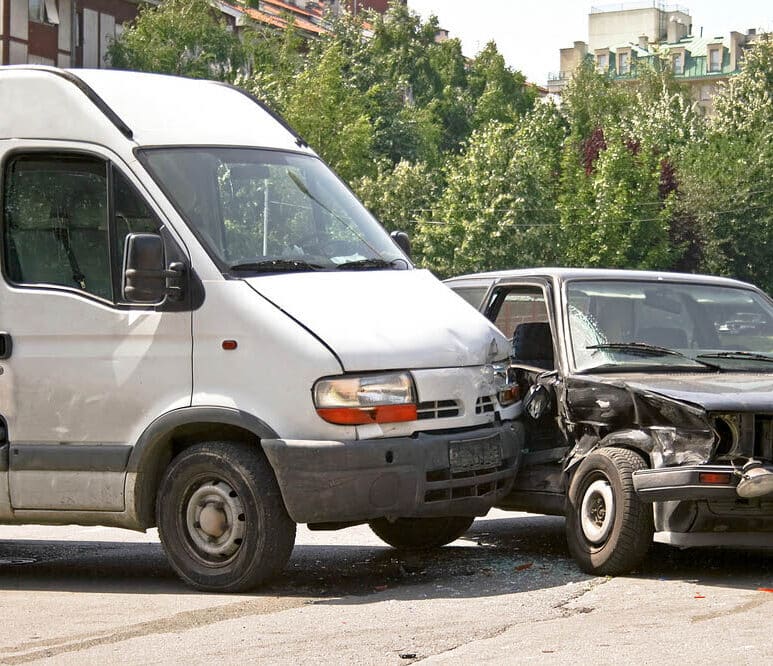- Are Comparative Negligence Laws State or Federal?
- Comparative Negligence Laws in Georgia
- Comparative Negligence Across the U.S.
- Examples of Comparative Negligence in Georgia
- 4. Challenge Unfair Fault Assignments
Comparative Negligence laws establish clear guidelines for dividing responsibility in accident where multiple parties share fault. Knowing and following this law is essential in accident claims. Although some principles are consistent across the U.S., Georgia has specific laws, and understanding them can prevent legal issues.
Below is a breakdown of Georgia’s comparative negligence law, covering vehicles covered by the law, penalties for violating this law and more.
Statistics Supporting Comparative Negligence Laws
National Data
- The National Safety Council reports that nearly 50% of accidents involve shared responsibility.
- In personal injury cases, assigning some degree of fault to both parties is common.
Georgia-Specific Insights
- In multi-car accidents, Georgia courts often assign partial blame to more than one driver, emphasizing the importance of shared liability principles.
- Data from insurance claims shows that disputed fault cases account for a significant portion of litigation in the state.
What is Comparative Negligence?
Comparative negligence is a legal framework for dividing responsibility in accidents where multiple parties share fault. Instead of placing full blame on one individual, this rule accounts for everyone’s actions and assigns fault percentages accordingly.
Are Comparative Negligence Laws State or Federal?

Why the Move Over Law Matters
-
Fairness in Accountability
These laws ensure that individuals are held accountable for their actions, while victims can still recover damages when they’re not primarily at fault.
-
Encourages Safety Practices
Understanding the consequences of fault-sharing encourages all parties to act more responsibly in various settings, from driving to maintaining property safety.
-
Provides Legal Clarity
Comparative negligence laws clearly define how compensation is calculated, providing transparency in the legal process.
Examples of Comparative Negligence in Georgia
Car Accident Example
- Driver A runs a red light but Driver B was speeding.
- Court assigns 70% fault to Driver A and 30% to Driver B.
- Driver B can recover 70% of their damages.
Slip-and-Fall Case Example
- A shopper trips on a spill in a grocery store but wasn’t watching where they were walking.
- Store is found 60% at fault for failing to clean up promptly; the shopper is 40% at fault.
- Shopper can recover 60% of damages.
Practical Tips to Protect Your Rights
-
Document the Scene Immediately
- Take photos of the accident, property damage, or injuries.
- Gather witness contact information.
2. Be Cautious When Communicating
- Avoid admitting fault or making speculative statements about the accident.
3. Seek Legal Representation
- A personal injury lawyer can help investigate the case, preserve evidence, and argue for a fair fault assignment.
4. Challenge Unfair Fault Assignments

Frequently Asked Questions (FAQs)
- What happens if the faults percentages are unclear?
Yes, it applies to all personal injury cases, including auto accidents, slip-and-falls, and product liability claims. - What happens if the fault percentages are unclear?
Courts rely on evidence and expert testimony to resolve disputes over fault. - Can insurance companies assign fault?
Insurance companies often propose fault percentages, but these can be challenged in court. - What if I’m partially at fault but uninsured?
Being partially at fault can still allow recovery, but being uninsured may bring additional penalties under Georgia’s financial responsibility laws.
When do You Need a Lawyer?
- Disputed Fault: An attorney can help contest an unfair fault assignment.
- Severe Injuries: If injuries result in long-term medical care or disability, professional representation is essential.
- Complex Cases: Multi-party accidents or unclear fault require expert legal navigation.
Accident?
Our team of experienced comparative negligence lawyers is ready to help you assess your case and fight for the compensation you deserve. Don’t let the negligence of others dictate your future–let us be your advocate in this challenging time.








